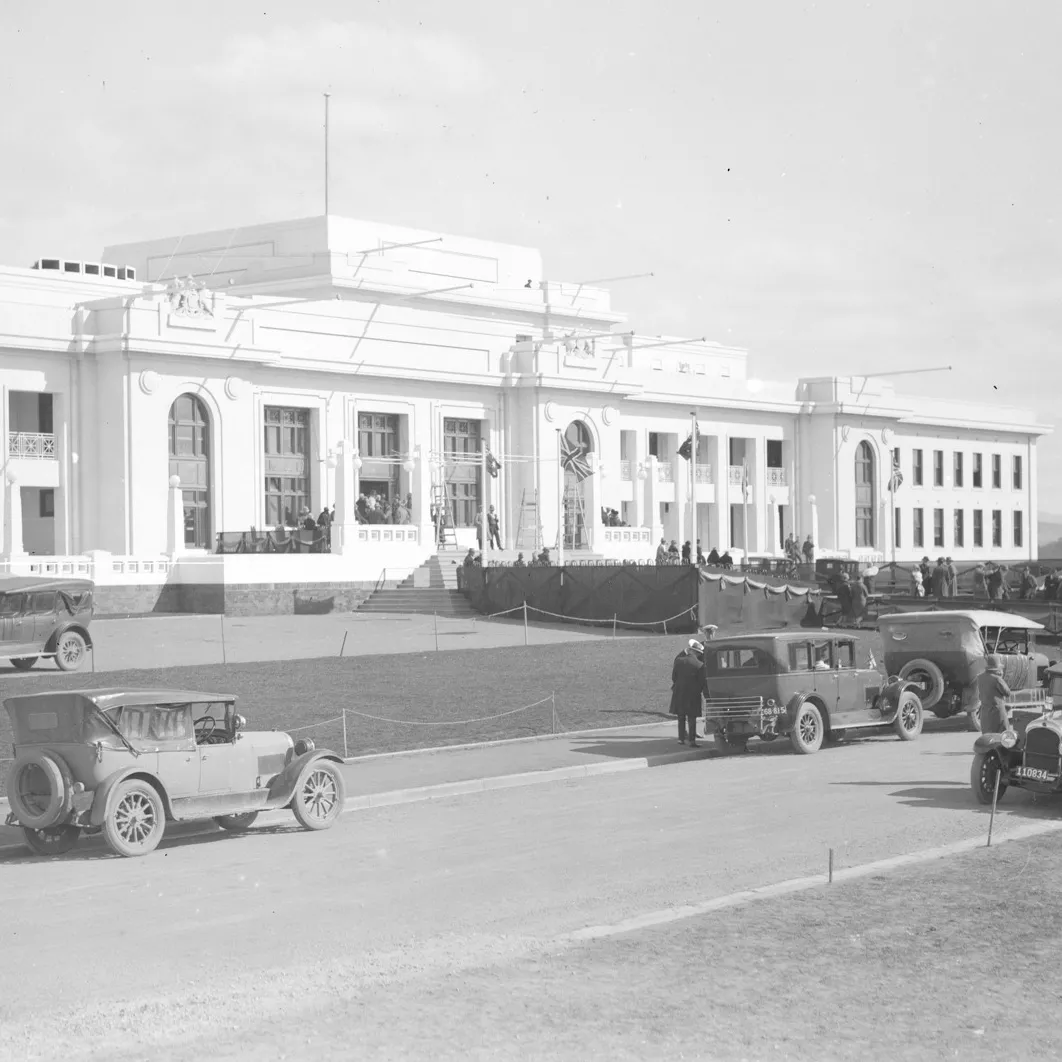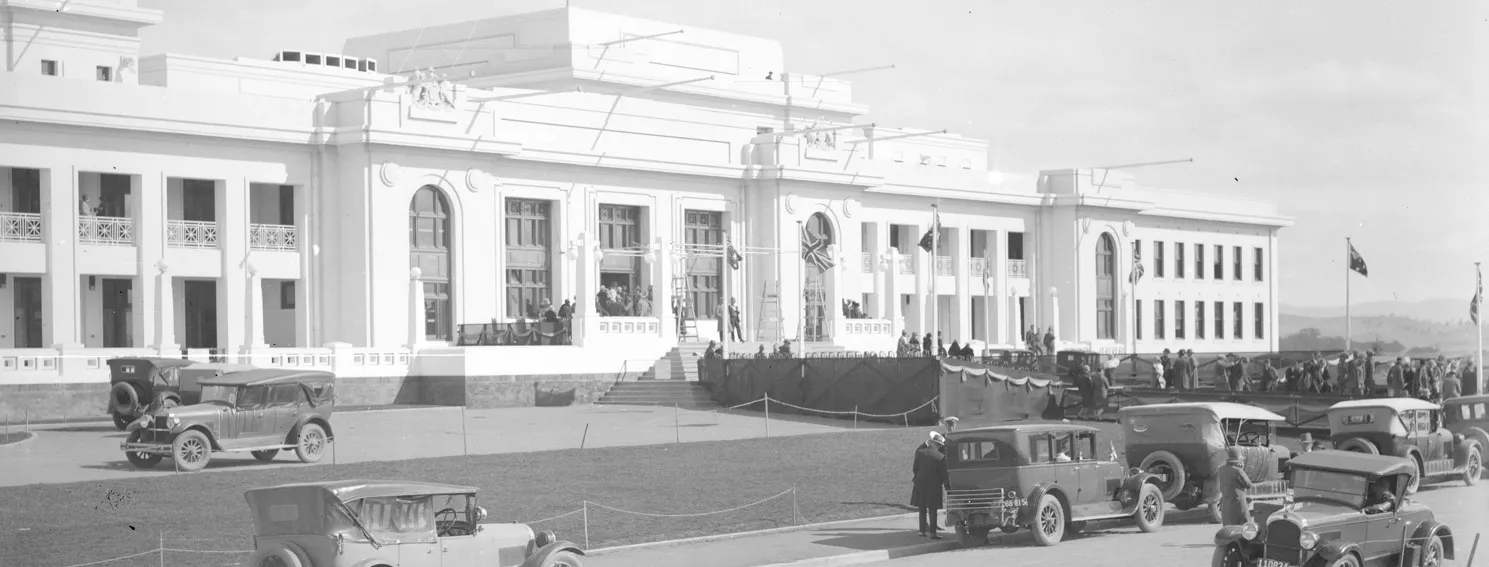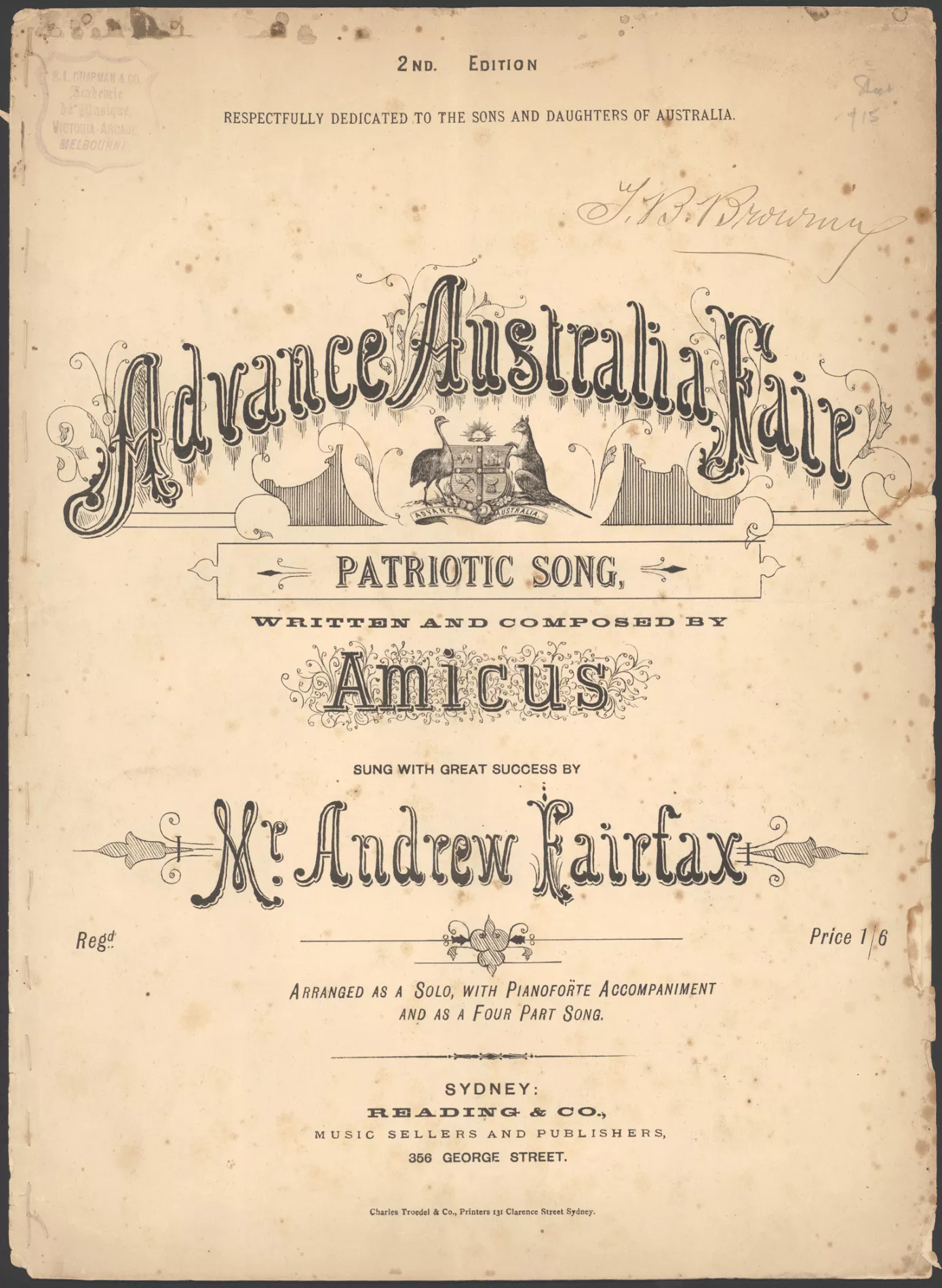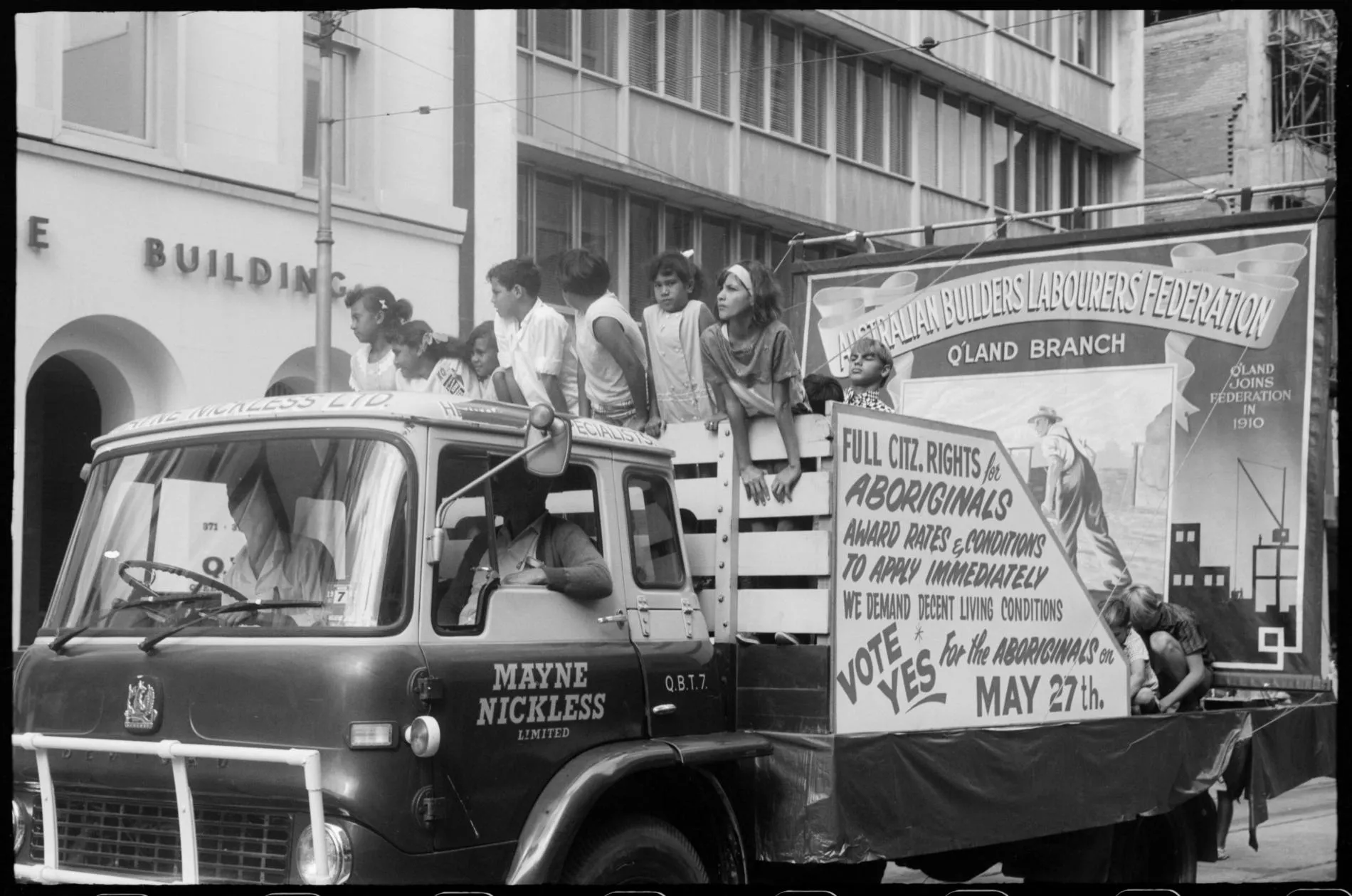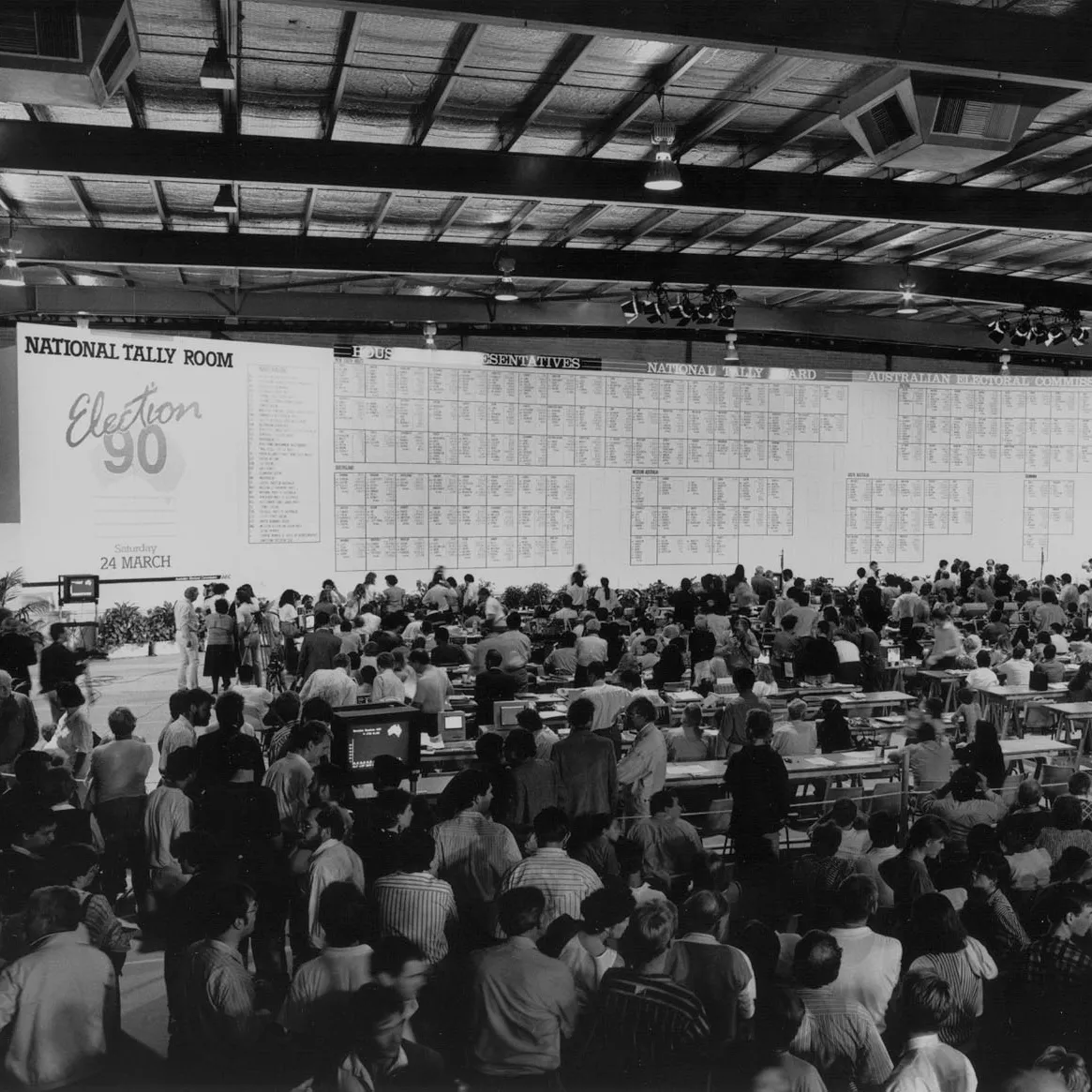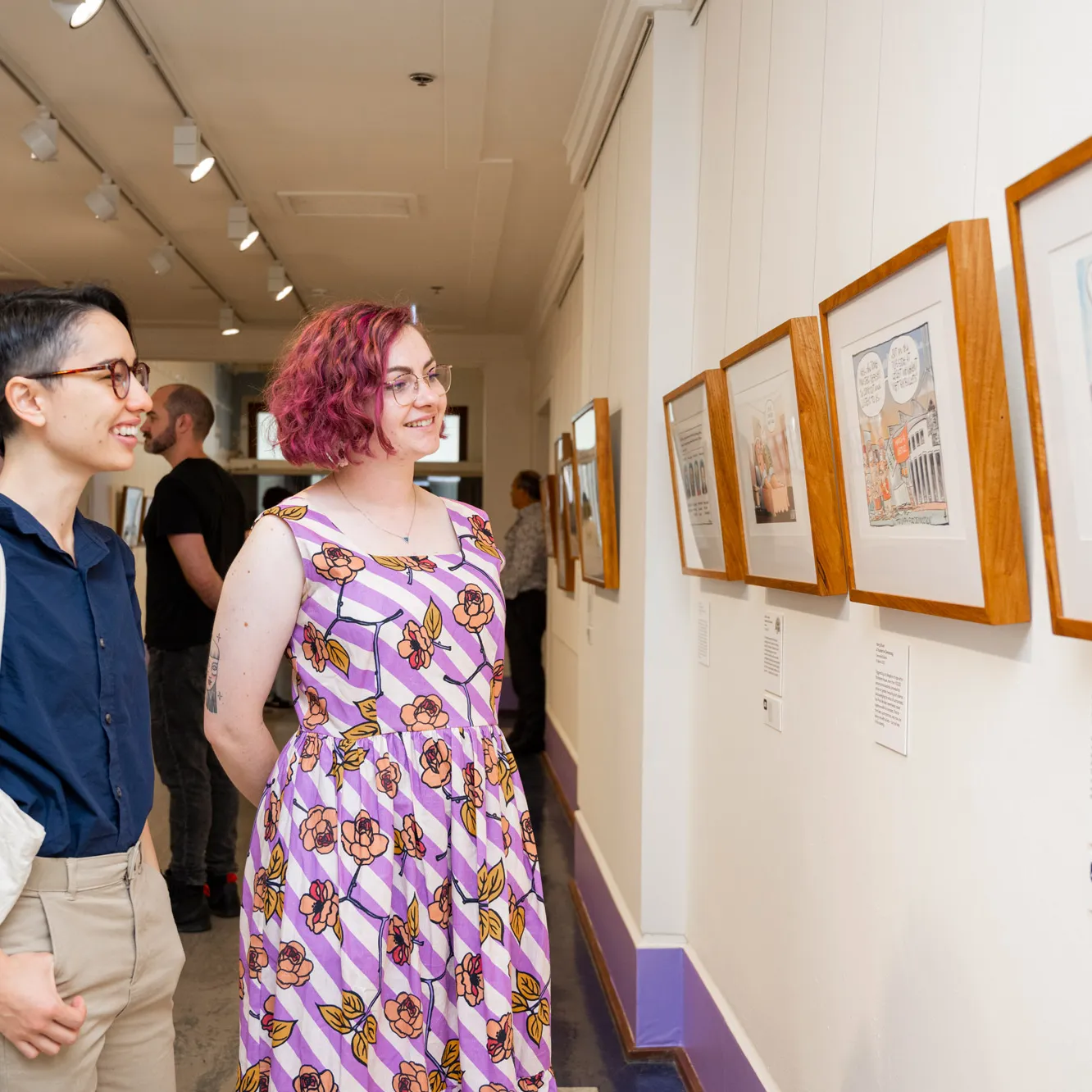History of Old Parliament House
Drama, decisions, democracy
Old Parliament House was the home of Australia's government from 1927 to 1988. During this time, great changes took place in Australian social and political life. This is the building in which democracy matured in Australia. It was here that the nation was shaped.
Events
Old Parliament House saw Australia through times of trouble and of celebration.
1927 Old Parliament House opens
The opening of the new (now old) parliament house in Canberra on 9 May 1927 was a huge celebration. Thousands of people came. They cheered and sang the national anthem with Dame Nellie Melba as RAAF planes flew past. The Duke of York opened the door with a big gold key. There was turtle soup, Canberra pudding and speeches inside; the crowd outside ate meat pies and scones.
1939–45 Second World War
Australia's two key prime ministers during the war years were Robert Menzies and John Curtin. Old Parliament House was blacked out at night and politicians had to find their way back to their hotels by following white lines on the footpaths. Petrol, food and clothing were rationed. Many men went to war or worked in jobs helping the war effort, and women took on roles that had been traditionally male. Senator Dorothy Tangney and Dame Enid Lyons MP became the first women elected to the Australian parliament.
1949 The first post-war federal election
A turning point for Australia. Should the nation stay with the Labor government which had led the people through the war years and was intent on work, housing and health? Or should people vote for the new Liberal Party, focusing on business and lower taxes? The Liberal's Robert Menzies engaged a publicity firm to show him as the leader of the future. At the election, Australians chose change. Menzies became the nation's longest-serving prime minister. This was the start of many years of conservative government in Australia.
1954 A royal visit
Queen Elizabeth II was Australia's head of state. In 1954, she and the Duke of Edinburgh toured Australia. On 15 February, the Queen opened parliament at Old Parliament House. She arrived in the rain, wearing her coronation gown. There was a royal salute from the defence force, a welcome from 3000 school children, and, of course, everyone sang the national anthem. Inside Old Parliament House, the Queen sat in the Vice Regal Chair in the Senate chamber. You can see the chair in the Senate chamber today, it's a treasured part of the museum collection.
1975 The Dismissal
The dismissal of sitting Prime Minister Gough Whitlam was one of the biggest events in Australian political history. On 11 November 1975 the Governor-General Sir John Kerr sacked Whitlam and called an election, installing Opposition Leader Malcolm Fraser as caretaker prime minister. The sacking was to break a political crisis caused by the Senate blocking supply, which meant the government could not spend money. Malcolm Fraser won the election held in December 1975, but there is still disgreement amongst historians, constitutional lawyers and other experts as to whether Kerr did the right thing when he sacked Whitlam.
Decisions
Old Parliament House is the place where many important decisions were made and laws that shaped the nation were passed. Some caused debate and division; others set Australia on a path to greater equality, inclusion, and care for its people, society and land.
The National Service Act of 1964 required many young men to serve in the armed forces. Thousands were sent to fight in the Vietnam War, something which was widely protested. Compulsory military service was scrapped in 1972.
The 1967 Referendum included Indigenous Australians as citizens for the first time, and offered them protection under national laws across all states.
The Racial Discrimination Act of 1975, followed the scrapping of the White Australia Policy and the acceptance of migrants from all lands and cultures. Australian society became more inclusive, and multiculturalism began to be celebrated.
The 1983 World Heritage Properties Conservation Act arose from Prime Minister Bob Hawke's election promise to stop the Gordon-below-Franklin Dam in Tasmania. This law allows the government to protect Australia's wilderness heritage in all states.
